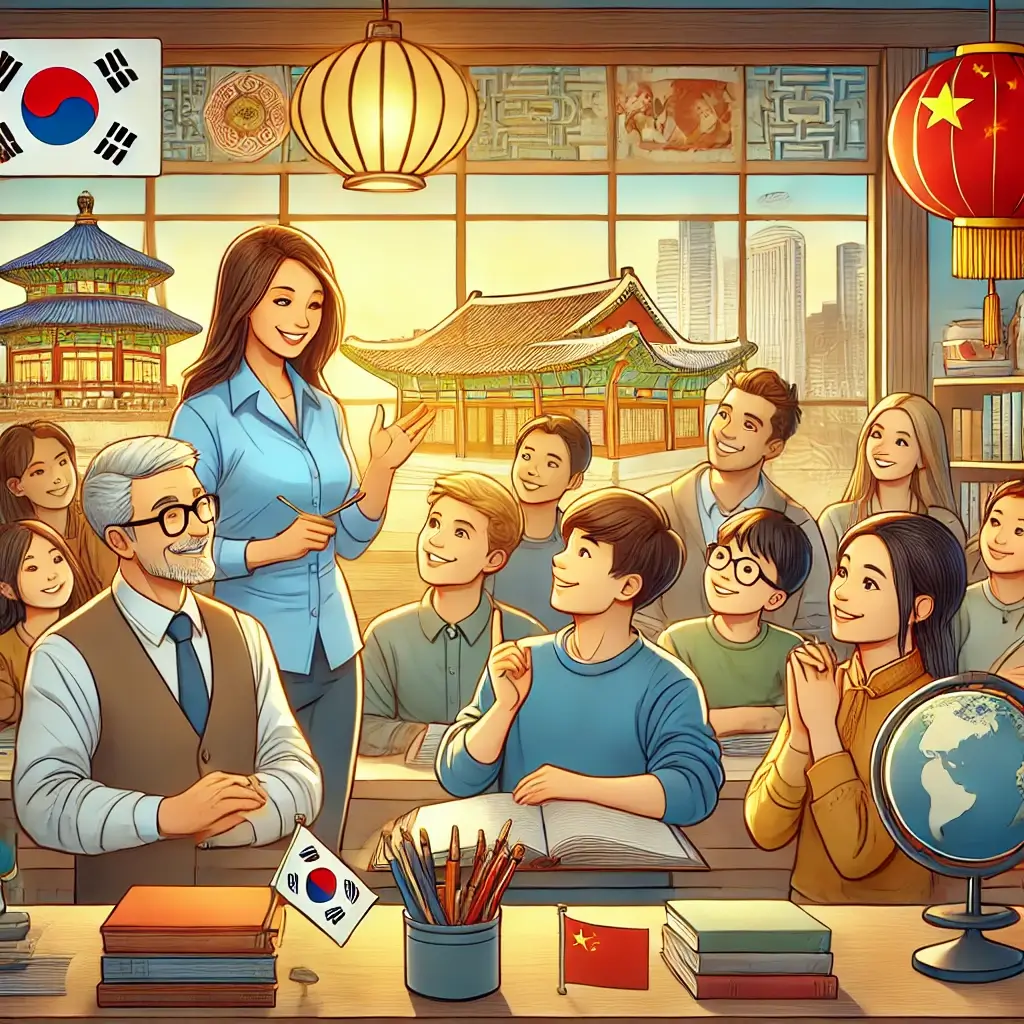A Day in the Life of an ESL Teacher in South Korea and China
Teaching English as a Second Language (ESL) in South Korea and China is an exciting opportunity for educators who want to travel, experience new cultures, and make a difference in students’ lives. Both countries offer structured teaching environments, great salaries, and cultural immersion. But what is a typical day like for an ESL teacher in these countries? Let’s take a closer look.
Morning Routine
대한민국
In South Korea, ESL teachers typically work in public schools or private academies called hagwons. A teacher’s day usually starts at around 7:00 AM if they work in a public school.
- Wake up, get ready, and grab a quick breakfast, usually something simple like toast or a kimbap roll from a convenience store.
- Commute to school via bus or subway. Public transport in Korea is very efficient.
- Arrive at school by 8:30 AM and prepare lesson materials before students arrive at 9:00 AM.
중국
ESL teachers in China work in public schools, private language institutions, or international schools. Their morning routine is quite similar to Korea’s.
- Wake up around 7:00 AM and enjoy a traditional breakfast like steamed buns or congee.
- Commute to work, often by bus, subway, or even electric scooters.
- Arrive at school by 8:00 AM to prepare lessons and interact with colleagues before classes begin at 8:30 AM.
Teaching Schedule and Classroom Experience
대한민국
- Classes usually last 40-50 minutes, with 4-5 lessons before lunch.
- Students are disciplined, and classrooms are structured with clear expectations.
- Teachers use interactive lessons, games, and storytelling to engage students.
- Public school teachers have co-teachers, while hagwon teachers often teach alone.
중국
- Classes vary from 30-45 minutes, depending on the school type.
- Students are enthusiastic and eager to learn English.
- ESL teachers focus on conversational skills, pronunciation, and basic grammar.
- Many schools encourage the use of multimedia and technology in the classroom.
Learn more- Teach Away
Lunch Break and Afternoon Classes
대한민국
- Teachers eat lunch in the school cafeteria with students or colleagues. Korean school lunches are nutritious, often including rice, kimchi, and soup.
- After lunch, teachers may have a free period to grade assignments, plan lessons, or relax.
- Afternoon classes typically continue until 3:30 PM for public schools, while hagwons may have classes from 2:00 PM to 10:00 PM.
중국
- Lunch is provided in most schools, offering local dishes like dumplings, rice, and stir-fried vegetables.
- Teachers have a midday break (sometimes up to two hours) to rest or prepare for afternoon lessons.
- Teaching continues until 4:00 PM in public schools, while private institutions may have evening sessions.
After School Activities and Free Time
대한민국
- Many teachers engage in extracurricular activities like English clubs or tutoring.
- Hagwon teachers usually work late, finishing around 9:00 or 10:00 PM.
- Public school teachers have more free time to explore local markets, go hiking, or visit coffee shops.
중국
- Teachers may offer private tutoring or participate in school-organized events.
- Evenings are perfect for exploring local attractions, trying street food, or socializing with fellow teachers.
- Night markets and cultural performances are popular in many cities.
Learn More- Go Overseas
Challenges of Being an ESL Teacher
대한민국
- Adapting to Korean work culture, which values hierarchy and respect.
- Balancing a structured schedule with personal time.
- Learning basic Korean phrases to communicate with students and locals.
중국
- Adjusting to large class sizes (sometimes 40+ students).
- Understanding Chinese educational expectations, which focus on memorization.
- Dealing with visa and work permit procedures.
Rewards of Teaching in South Korea and China
대한민국
- Competitive salary with benefits like housing and health insurance.
- Beautiful scenery, from bustling cities to scenic mountains.
- A strong support system for foreign teachers.
중국
- High demand for English teachers, offering great job stability.
- Affordable cost of living, allowing teachers to save money.
- A rich cultural experience, from historical landmarks to delicious cuisine.
Final Thoughts
Teaching in South Korea and China offers a rewarding experience, both professionally and personally. Whether you prefer Korea’s structured environment or China’s diverse opportunities, ESL teaching in Asia can be a life-changing adventure. If you’re thinking about teaching abroad, research your options, get certified, and take the leap!


